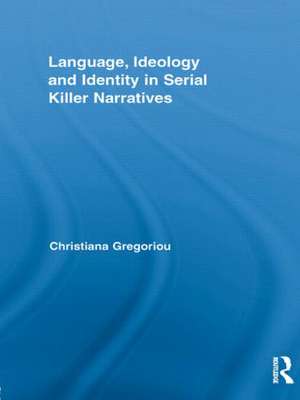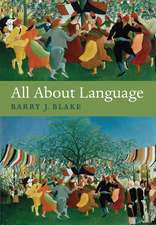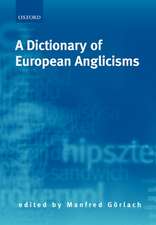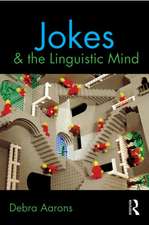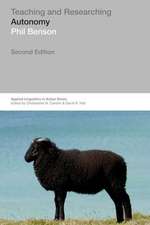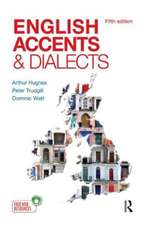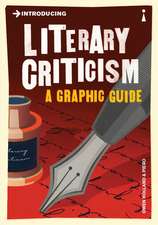Language, Ideology and Identity in Serial Killer Narratives: Routledge Studies in Rhetoric and Stylistics
Autor Christiana Gregoriouen Limba Engleză Paperback – 21 mai 2015
| Toate formatele și edițiile | Preț | Express |
|---|---|---|
| Paperback (1) | 482.17 lei 43-57 zile | |
| Taylor & Francis – 21 mai 2015 | 482.17 lei 43-57 zile | |
| Hardback (1) | 1109.04 lei 43-57 zile | |
| Taylor & Francis – 21 dec 2010 | 1109.04 lei 43-57 zile |
Din seria Routledge Studies in Rhetoric and Stylistics
-
 Preț: 302.84 lei
Preț: 302.84 lei -
 Preț: 325.68 lei
Preț: 325.68 lei -
 Preț: 434.07 lei
Preț: 434.07 lei -
 Preț: 489.26 lei
Preț: 489.26 lei -
 Preț: 469.34 lei
Preț: 469.34 lei - 18%
 Preț: 299.52 lei
Preț: 299.52 lei -
 Preț: 416.22 lei
Preț: 416.22 lei -
 Preț: 387.38 lei
Preț: 387.38 lei -
 Preț: 445.89 lei
Preț: 445.89 lei -
 Preț: 449.41 lei
Preț: 449.41 lei -
 Preț: 449.41 lei
Preț: 449.41 lei - 16%
 Preț: 301.13 lei
Preț: 301.13 lei -
 Preț: 395.37 lei
Preț: 395.37 lei -
 Preț: 416.22 lei
Preț: 416.22 lei -
 Preț: 389.38 lei
Preț: 389.38 lei - 16%
 Preț: 260.93 lei
Preț: 260.93 lei -
 Preț: 371.72 lei
Preț: 371.72 lei -
 Preț: 391.02 lei
Preț: 391.02 lei -
 Preț: 389.66 lei
Preț: 389.66 lei -
 Preț: 389.66 lei
Preț: 389.66 lei
Preț: 482.17 lei
Nou
Puncte Express: 723
Preț estimativ în valută:
92.29€ • 100.28$ • 77.58£
92.29€ • 100.28$ • 77.58£
Carte tipărită la comandă
Livrare economică 21 aprilie-05 mai
Preluare comenzi: 021 569.72.76
Specificații
ISBN-13: 9781138886056
ISBN-10: 113888605X
Pagini: 198
Ilustrații: 34 black & white illustrations, 6 black & white tables, 28 black & white halftones
Dimensiuni: 152 x 229 mm
Greutate: 0.29 kg
Ediția:1
Editura: Taylor & Francis
Colecția Routledge
Seria Routledge Studies in Rhetoric and Stylistics
Locul publicării:Oxford, United Kingdom
ISBN-10: 113888605X
Pagini: 198
Ilustrații: 34 black & white illustrations, 6 black & white tables, 28 black & white halftones
Dimensiuni: 152 x 229 mm
Greutate: 0.29 kg
Ediția:1
Editura: Taylor & Francis
Colecția Routledge
Seria Routledge Studies in Rhetoric and Stylistics
Locul publicării:Oxford, United Kingdom
Public țintă
Postgraduate and UndergraduateCuprins
1. Crime Scenes 2. Killer Headlines 3. True Crime! 4. Buying Crime 5. The Verdict
Descriere
In this book, Gregoriou explores the portrayal of the serial killer identity and its related ideology across a range of contemporary crime narratives, including detective fiction, the true crime genre and media journalism. How exactly is the serial killer consciousness portrayed, how is the killing linguistically justified, and how distinguishing is the language revolving around criminal ideology and identity across these narrative genres? By employing linguistic and content-related methods of analysis, her study aims to work toward the development of a stylistic framework on the representation of serial killer ideology across factual (i.e. media texts), factional (i.e. true crime books) and fictional (i.e. novels) murder narratives. ‘Schema’ is a term commonly used to refer to organised bundles of knowledge in our brains, which are activated once we come across situations we have previously experienced, a ‘group schema’ being one such inventory shared by many. By analysing serial murder narratives across various genres, Gregoriou uncovers a widely shared ‘group schema’ for these murderers, and questions the extent to which real criminal minds are in fact linguistically fictionalised. Gregoriou’s study of the mental functioning and representation of criminal personas can help illuminate our schematic understanding of actual criminal minds.
